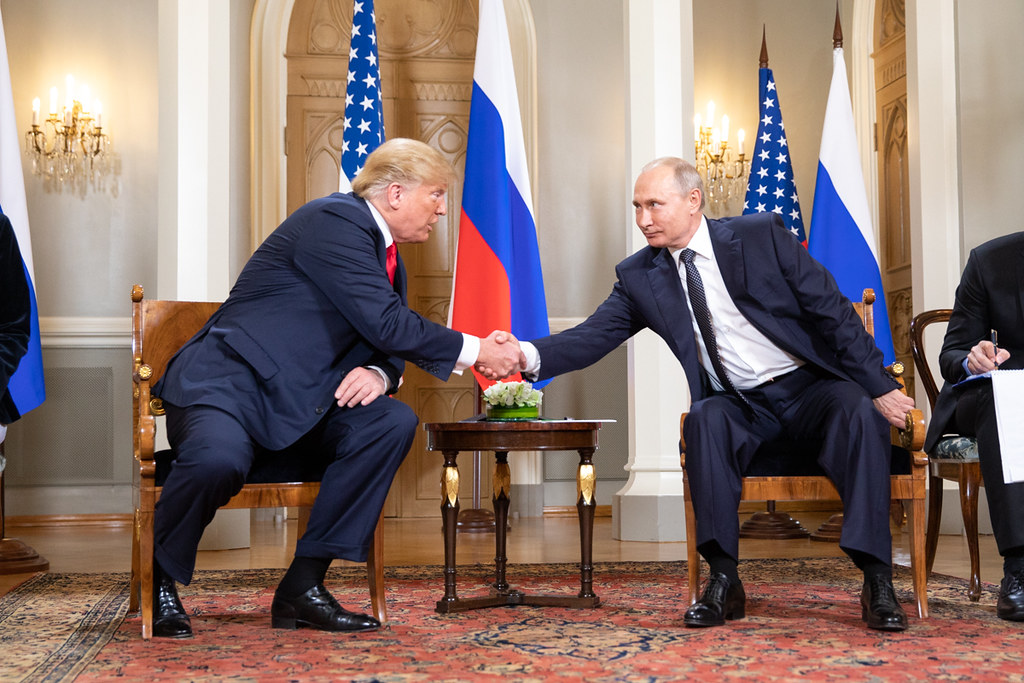Quick Take: Kremlin and White House Communications Provide Insight after Trump-Putin Call

The March 18th phone call between US President Donald Trump and Russian President Vladimir Putin yielded little in the way of actual progress in ending the war in Ukraine. Indeed, the limited ceasefire was quickly violated by Russia (who agreed to it) and Ukraine (who did not). However, we can learn a great deal from the discrepancies in the readouts provided by the Kremlin and the White House.
Russia’s readout was lengthier and more revealing. It began with a statement that Russia seeks a stable and lasting peace together with the US, but adds (contrary to the American readout) that any solution must address “the origins of the crisis, [and] Russia’s legitimate security interests.” This formulation concerning the “origins of the crisis” has been a mainstay of Russia’s depiction of the conflict, while the actual meaning varies in practice. At one end of the spectrum, it can refer to Russia’s grievances about NATO enlargement—itself a proxy for Russia’s dissatisfaction with its position in the post-Cold War international order. At the other, it is invoked in support of Russia’s neo-imperial claims and its rejection of Ukrainian sovereignty and independence.
The most striking divergence between the two readouts came in Russia’s rejection of a full cease-fire, for which it repeated its demands for an end to mobilization and rearmament in Ukraine, as well as an end to all foreign military assistance and intelligence sharing. Russia’s readout further expresses outrage over Ukraine’s “barbaric, terrorist act” in the occupation of a portion of the Kursk oblast, which is cited as a key obstacle to any diplomatic settlement. Another key discrepancy concerns Russia’s promise that Ukrainian prisoners in Kursk would be spared and treated with dignity “in accordance with Russian laws and international norms,” as well as promised prisoner exchange with Ukraine—neither of which were mentioned in the US readout.
The White House’s readout was much shorter, emphasizing the goal of improving relations between the US and Russia. Ukraine was mentioned just once in stating, “The blood and treasure that both Ukraine and Russia have been spending in this war would be better spent on the needs of their people.” The US readout next echoes Trump’s earlier suggestion that Ukraine was responsible for the war, stating, “This conflict should never have started and should have ended long ago with sincere and good faith peace efforts.” In short, the US readout mentions none of Russia’s preconditions for negotiation and could be read as aligning with Russia’s claims about the war’s origins.
The most significant points of agreement between the Russian and US readouts concern the mention of the ceasefire concerning energy infrastructure and the potential for future bilateral economic and strategic cooperation, particularly as concerns the Middle East. Both of these points work to Russia’s advantage. First and foremost, they make clear that neither the US nor Russia intend to treat Ukraine as a party to the war currently being waged against it. While the US is willing to cut off military aid and intelligence sharing to force Ukraine to consider a peace deal with Russia (which will likely involve ceding territory to the aggressor, as previously made clear by National Security Advisor Mike Waltz), it appears uninterested in pressing Russia to address human rights issues and war crimes, including mass abductions, systematic use of torture, passportization, cultural destruction, and forced indoctrination.
With regard to the ceasefire, Ukraine’s homegrown drones are increasingly effective in targeting Russian refineries. Its attacks on Russian soil created political difficulties for the Kremlin and contributed to domestic popular sentiment in support of ending the war. The ceasefire removes this key weakness from the negotiating table while leaving Russia unrestrained to continue targeting civilian infrastructure in Ukraine.
The points concerning future economic and strategic cooperation are meaningful and revealing. In his confrontation with Zelenskyy in the Oval Office, Trump indicated that he believes the lure of economic cooperation with the US will restrain Russia. Going forward, this will be a major point of division between the US and Europe. Indeed, the EU’s experience has been the opposite: that economic cooperation with Russia served to restrain Europe’s response to the full-scale invasion of Ukraine, forcing difficult and painful decisions to cut economic ties to avoid further compromising European security. That the US and Russian readouts express equal enthusiasm about future economic and strategic cooperation is the clearest sign yet that Europe and Ukraine cannot depend on either the US or Russia to provide credible security guarantees.